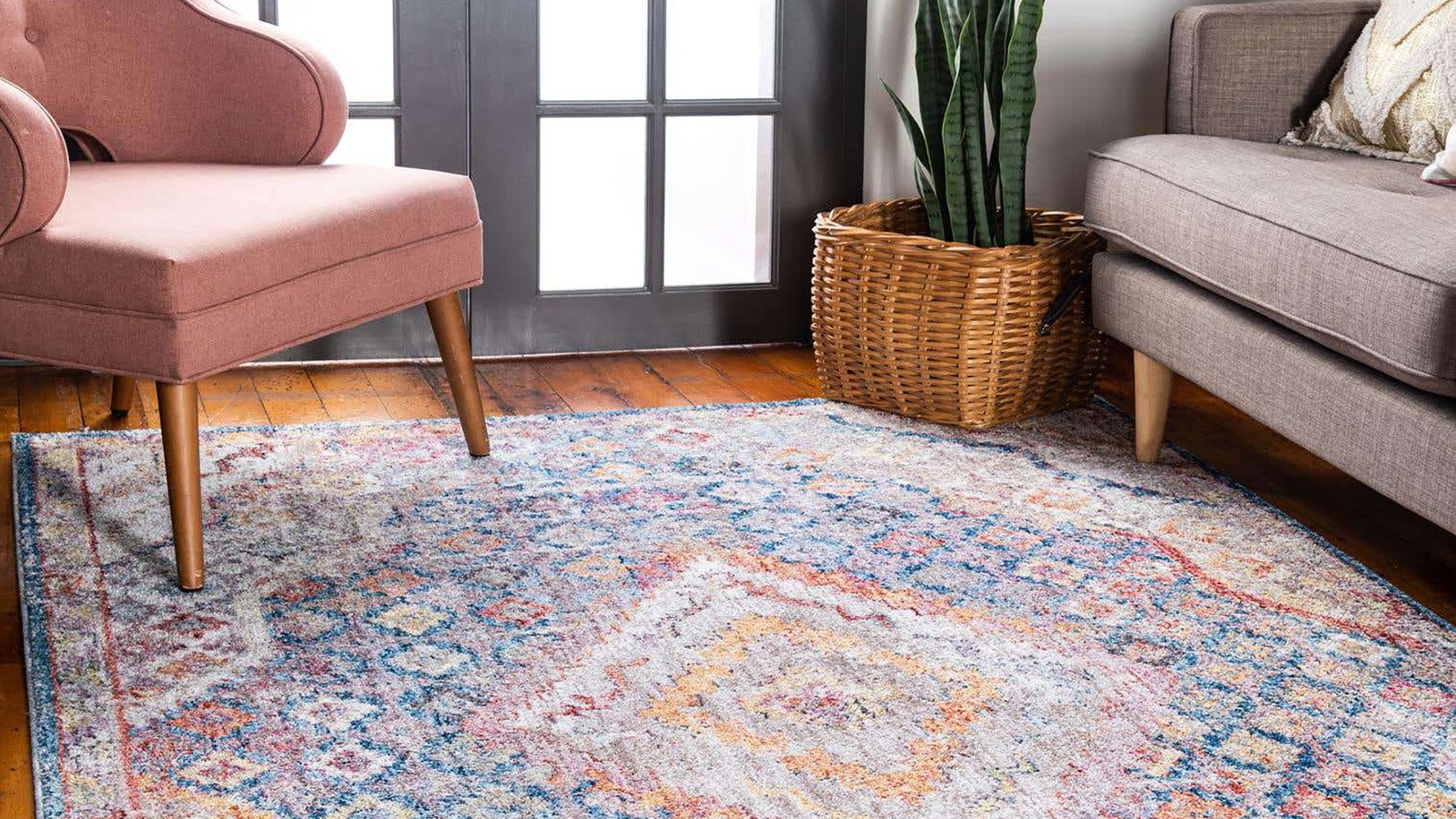A well-chosen rug can be the cornerstone of your room’s decor, tying together various elements and adding warmth, texture, and color. However, finding the perfect rug can be a daunting task, given the variety of sizes, materials, and styles available. This guide will help you navigate the options and choose a rug that perfectly complements your space.
1. Determine the Right Size
The size of the rug you choose can dramatically affect the overall look and feel of your room. A rug that’s too small may make the space feel disjointed, while a rug that’s too large can overwhelm the room.
- Living Room: If you have a seating area, your rug should be large enough to fit under the front legs of your sofa and chairs. For a more unified look, consider a rug that fits under all the furniture legs. In smaller living rooms, a rug that sits in front of the furniture, leaving a border of floor space, can also work well.

- Dining Room: The rug should be large enough to accommodate the table and chairs, even when the chairs are pulled out. A good rule of thumb is to choose a rug that extends at least 24 inches beyond the edges of the table.
- Bedroom: In a bedroom, the rug should extend beyond the sides and foot of the bed. A common option is to place the rug under the bottom two-thirds of the bed, leaving the nightstands on the floor. For smaller rooms, two runners on either side of the bed can also provide a cozy touch.
2. Select the Right Material
The material of the rug not only affects its appearance but also its durability and maintenance. Consider the level of foot traffic in the room and your lifestyle when choosing a rug material.
- Wool: Wool rugs are durable, soft, and naturally stain-resistant, making them a popular choice for high-traffic areas like living rooms. They’re also great for insulating a room, adding warmth and comfort.
- Cotton: Cotton rugs are lightweight and often more affordable than wool. They are easy to clean and can work well in casual spaces or kitchens. However, they may wear out faster than other materials.
- Jute and Sisal: These natural fibers are known for their texture and durability. They add an organic, rustic feel to a room. However, they can be rough underfoot and are not ideal for areas prone to spills, as they are harder to clean.
- Silk or Viscose: These materials offer a luxurious sheen and a soft feel. They are best suited for low-traffic areas like bedrooms or formal living rooms, as they can be more delicate and harder to clean.
- Synthetic Fibers: Rugs made from synthetic materials like nylon or polyester are usually more affordable and stain-resistant. They’re a good option for households with kids or pets and work well in high-traffic areas.
3. Choose a Style That Complements Your Decor
The style of the rug should enhance the existing decor of your space. Whether you prefer traditional, modern, or eclectic design, there’s a rug that can match your aesthetic.
- Traditional: Oriental and Persian rugs are classic choices that add a touch of elegance to any room. These rugs are often characterized by intricate patterns and rich colors.
- Modern: For a contemporary look, consider rugs with bold patterns, geometric designs, or abstract art. Solid colors or subtle textures can also work well in modern spaces, providing a sleek, minimalist feel.
- Bohemian: If you love eclectic decor, a bohemian rug with vibrant colors and diverse patterns can bring character and warmth to your space. Vintage or distressed rugs are also popular in boho-inspired rooms.
- Natural/Organic: For a serene, earthy vibe, choose rugs in neutral colors made from natural fibers like jute, sisal, or wool. These rugs can complement a variety of decor styles, from coastal to rustic.
4. Consider the Room’s Functionality
When choosing a rug, it’s important to consider how the room is used. A beautiful rug might look perfect in a living room, but it might not be practical in a busy hallway.
- High-Traffic Areas: Choose a durable, low-pile rug that can withstand heavy use and is easy to clean. Wool or synthetic rugs are ideal for these spaces.
- Low-Traffic Areas: In bedrooms or formal dining rooms, you can opt for more delicate rugs with higher piles, such as shag or silk rugs, which add a luxurious feel.
- Kid-Friendly Areas: For playrooms or family rooms, consider a rug made of synthetic fibers or cotton, which are easy to clean. Patterns and darker colors can help disguise stains and wear.
5. Don’t Forget the Rug Pad
A rug pad is essential for keeping your rug in place, providing additional cushioning, and extending the life of your rug. It also helps prevent slips and falls, especially on hardwood or tile floors.
- Choosing a Pad: Select a rug pad that matches the size of your rug and the type of flooring. Felt pads offer the most cushioning, while rubber pads provide grip and prevent slipping.
By considering these factors—size, material, style, and functionality—you can find the perfect rug that not only enhances your space but also suits your lifestyle. A well-chosen rug can transform a room, adding comfort, warmth, and a touch of personal style.
